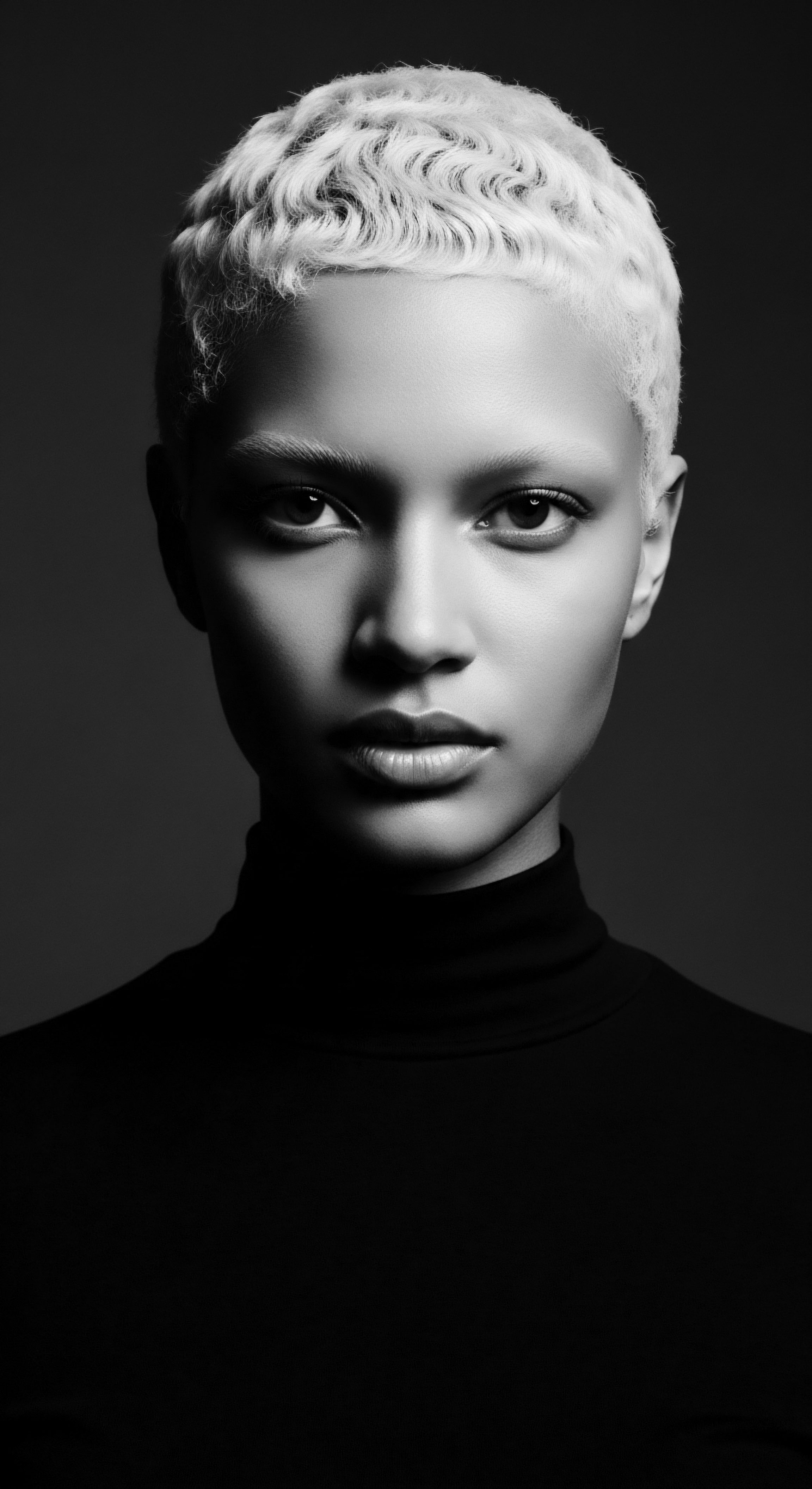
Roots
To stand at the precipice of understanding hair dyeing rituals for textured hair is to gaze back through millennia, into a continuum where adornment and identity intertwine with the very earth and spirit. This is not a mere account of cosmetic practices. It is an invitation to witness the living memory held within each strand, a deep echo of ancestral rhythms and wisdom.
For those whose lineage traces through the richly varied landscapes of Black and mixed-race heritage, the act of altering hair color often speaks volumes beyond the visible shade. It tells tales of community, status, protection, and profound spiritual connection.
The journey begins at the root, both literally and figuratively. Textured hair, with its unique helical structure, exhibits a spectrum of curl patterns, from broad waves to tightly coiling spirals. Its inherent qualities, shaped over countless generations, provided a natural canvas for expression in diverse African societies. These societies recognized hair as more than a physical attribute.
It functioned as a potent visual lexicon, communicating a person’s age, marital status, wealth, tribal affiliation, and even spiritual disposition. Altering the hair’s appearance, including its color, was a deliberate act embedded within this rich communicative system.

Hair Anatomy and Ancestral Wisdom
The resilience and distinctiveness of textured hair stems from its anatomical and physiological design. Each strand possesses an elliptical or flattened cross-section, which encourages the formation of curls and coils. The cuticle layers, while present, may be fewer or more widely spaced at points along the strand, potentially influencing how external substances like pigments adhere. This inherent structure, a biological adaptation to various climates and environments, especially the intense sun of many African regions, necessitated specific care practices developed over generations.
Early communities instinctively understood that their hair required particular attention to moisture retention and protection. This led to the creation of remedies and rituals designed to preserve its vitality, often incorporating plant-based pigments.
This ancestral knowledge, passed from elder to child, recognized the hair’s intimate connection to well-being. It was understood that hair, as the highest point of the body, served as a conduit to the divine and ancestral realms. Thus, treatments applied to the hair were not merely for aesthetic purposes. They were imbued with intention, seeking balance, protection, and spiritual alignment.

Traditional Classifications and Hair’s Lexicon
While modern trichology offers classifications like the Andre Walker hair typing system, ancestral communities possessed their own sophisticated ways of understanding and naming hair characteristics. These often intertwined with the very rituals of care and adornment. The terminology used, though perhaps not formalized in scientific texts, was deeply practical and culturally resonant.
Consider the meticulous attention paid to different curl patterns, the responsiveness of hair to particular moisture-rich ingredients, or its behavior during styling. This practical lexicon informed the selection of natural materials for both care and coloration.
Ancestral traditions reveal that hair dyeing was seldom a solitary act, but a shared experience, binding individuals to community and ancestral lore.
The application of pigments, therefore, became a part of a larger, living archive of knowledge. This archive documented how certain plants, clays, or minerals interacted with specific hair types. It chronicled how particular shades announced life transitions or group affiliations.

Hair Growth and Environmental Echoes
The cyclical nature of hair growth was well understood in ancient societies. Its renewal mirrored the rhythms of nature and life itself. Factors such as diet, climate, and community practices directly influenced hair health and appearance. Traditional diets, rich in nutrient-dense foods, supported robust hair growth.
Environmental elements like strong sun or arid conditions led to the development of protective applications, which often included natural colorants. The Himba people, for example, apply a mixture of red ochre, butterfat, and aromatic resin to their hair. This iconic red tint, beyond its striking visual appeal, provides sun protection and helps deter insects. Such practices underscore a profound symbiosis between human ingenuity, natural resources, and the dictates of heritage.
| Traditional Pigment Source Red Ochre (e.g. Himba) |
| Primary Cultural Application Symbol of earth, blood, life essence; social status marker, sun protection. |
| Associated Hair Type/Function Coiled hair, protective coating, rich reddish-brown hue. |
| Traditional Pigment Source Indigo (e.g. West African, Ayurvedic) |
| Primary Cultural Application Deep blue to black tones; medicinal properties, textile dyeing history. |
| Associated Hair Type/Function Various textures, used to achieve darker shades, often with henna. |
| Traditional Pigment Source Henna (e.g. North Africa, Middle East) |
| Primary Cultural Application Reddish-brown tones; ritual adornment, celebratory body art, conditioning. |
| Associated Hair Type/Function All textures, provides color and strengthens hair. |
| Traditional Pigment Source These natural colorants were deeply integrated into daily life and significant rituals, reflecting a heritage of resourceful beauty. |

Ritual
From the foundational understanding of the hair itself, we move into the dynamic realm of ritual. Here, hair dyeing rituals for textured hair are seen not as isolated acts, but as integral components of broader styling traditions, each imbued with layers of cultural meaning and historical resonance. These rituals transformed hair into a living canvas, reflecting individual identity, communal bonds, and spiritual narratives. The meticulous application of pigments, the patient braiding, and the communal gatherings around hair care were all acts of cultural transmission, weaving heritage into every strand.

Protective Styling’s Ancestral Threads
The deep roots of protective styling, so common in contemporary textured hair care, extend directly into ancestral practices where hair dyeing often played a part. Styles like cornrows, braids, and twists, far from being mere aesthetic choices, served practical functions. They protected the hair from environmental elements, reduced tangling, and minimized breakage. Within these styles, color could delineate patterns, accentuate divisions, or signify the longevity of a particular protective measure.
For example, in many West African societies, the intricacy of braids or the addition of specific colored extensions could denote tribal identity, age, or marital status. The dyes used often came from locally available plants or minerals, reinforcing a connection to the land and its resources.
Consider the Fulani people of West Africa, renowned for their distinctive braids adorned with beads and cowrie shells. These adornments, at times accompanied by subtle coloration of the hair or scalp with traditional pigments, were not simply decorative. They conveyed fertility, social standing, and suitability for marriage.
The very act of creating these elaborate styles involved hours of communal effort, with women gathering to share stories, pass down techniques, and strengthen social ties. This highlights how hair styling, with or without dyeing, was a profound social ritual.
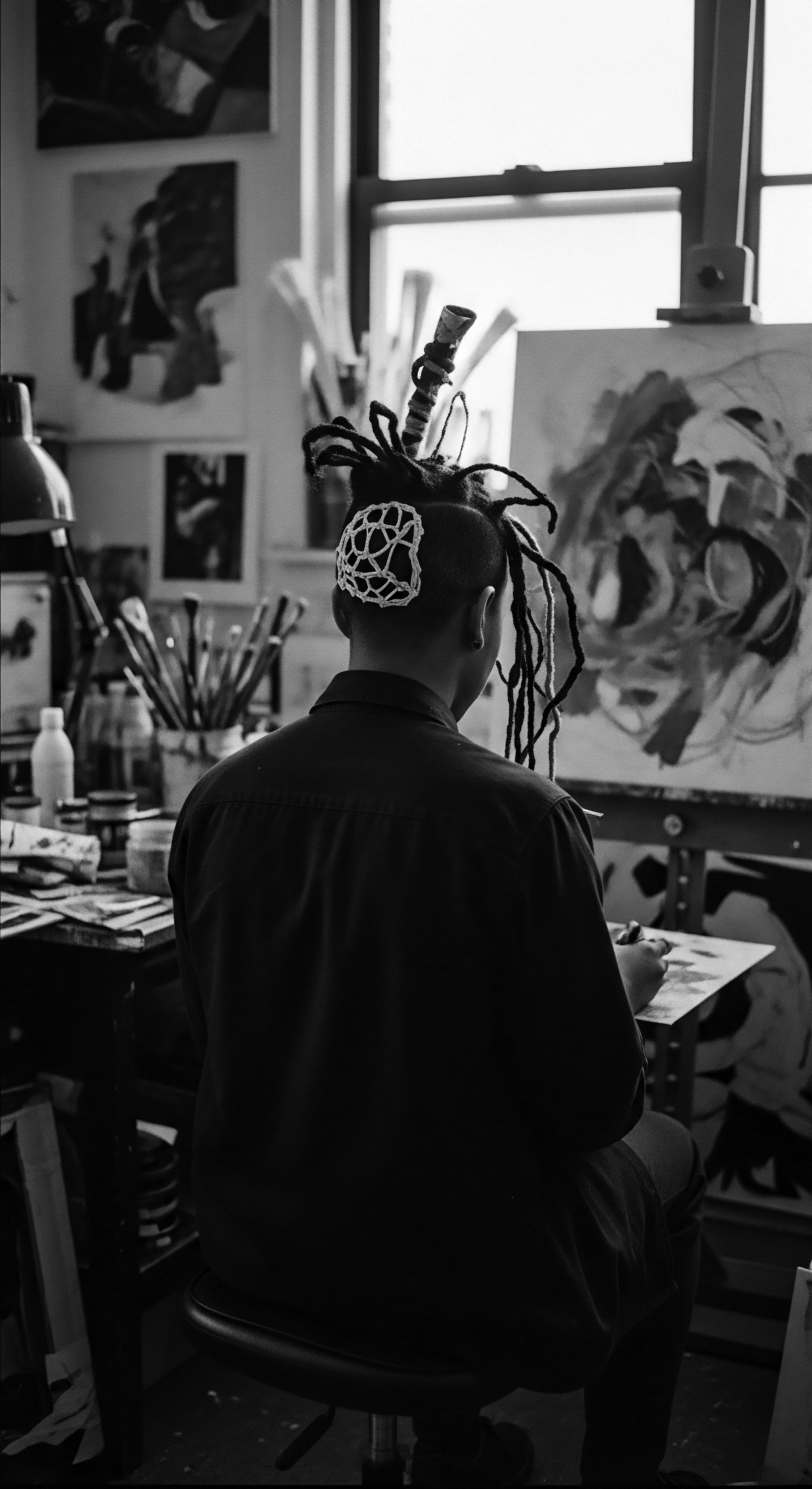
Natural Styling and Defined Heritage
The desire for definition and form in textured hair finds its lineage in ancient techniques. Natural styling often involved using various butters, oils, and plant extracts not only for conditioning but also to enhance curl patterns and hold. When natural pigments were introduced into these preparations, they added another dimension of expression.
For example, some indigenous groups utilized clay mixtures not only to cleanse and condition the hair but also to impart a specific earthy hue that might signify connection to their ancestral lands. The pigments would cling to the natural coils, creating a subtle yet distinctive color that was deeply connected to the person’s environment and tradition.
The history of hair dyeing rituals for textured hair reflects a continuous dialogue between the human hand, natural resources, and profound cultural conviction.
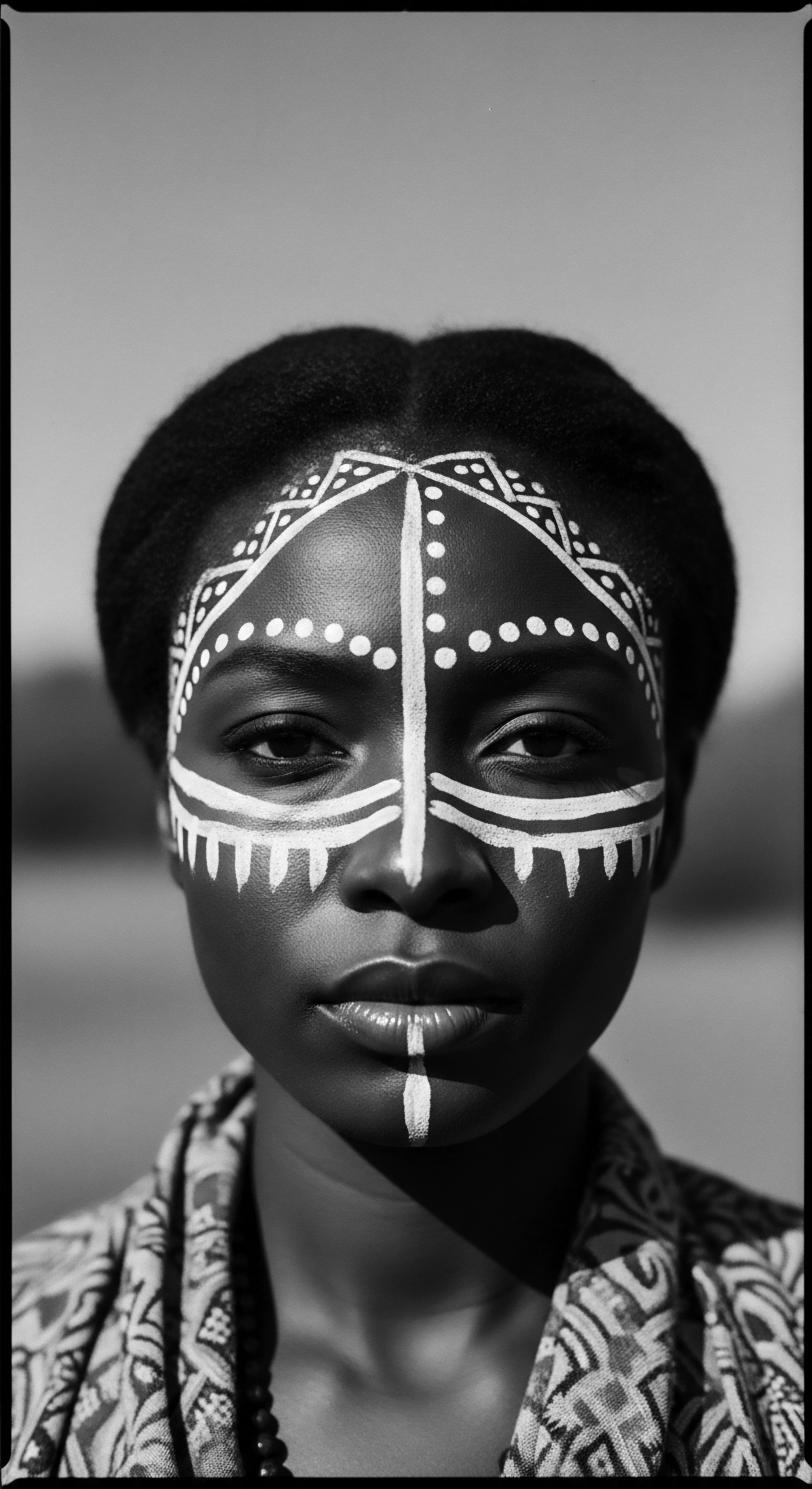
Wigs, Hair Extensions, and Historical Narratives
The use of wigs and hair extensions, often thought of as modern phenomena, also boasts a long and rich history within communities with textured hair. In ancient Egypt, for instance, elaborate wigs made from human hair, wool, or plant fibers were common among the elite. These were often braided, adorned with gold or beads, and could be colored using mineral pigments. Such extensions, sometimes dyed to match or contrast with natural hair, symbolized wealth, social standing, and a connection to divinity.
They represent an early form of transformative hair art, where altering the hair’s appearance, including its shade, was a tool of self-presentation and societal communication. The continuity of this practice speaks to its deep cultural roots.

Heat and Traditional Conditioning
While modern heat styling focuses on altering texture, traditional practices often employed warmth in conjunction with natural oils and butters to deeply condition the hair. For example, some African communities would warm shea butter or other plant oils before applying them to the hair and scalp. This warmth helped the nourishing ingredients penetrate more effectively.
When these conditioning mixtures contained natural colorants, the heat would assist in the pigment’s adherence, allowing for a deeper or more lasting tint. These methods prioritized hair health alongside aesthetic modification, reflecting a holistic approach where beauty practices were intrinsically linked to well-being.
Such practices were not about achieving a temporary look but about cultivating hair that was both visually striking and inherently strong.
- Chebe Powder ❉ Used by the Basara women of Chad, this blend of herbs and oils, applied to hair and braided, is associated with length retention. While not strictly a dye, some formulations could have imparted subtle color variations over time due to the natural pigments within the herbs.
- Ayurvedic Herbs ❉ Ingredients such as Amla (Indian gooseberry) and Bhringraj, used in Ayurvedic traditions, contribute to hair health and can also darken hair, often in conjunction with henna or indigo.
- Indigofera Tinctoria ❉ The plant source for indigo dye, historically used across various cultures including in parts of Africa and India, to achieve deep blue or black hair shades.
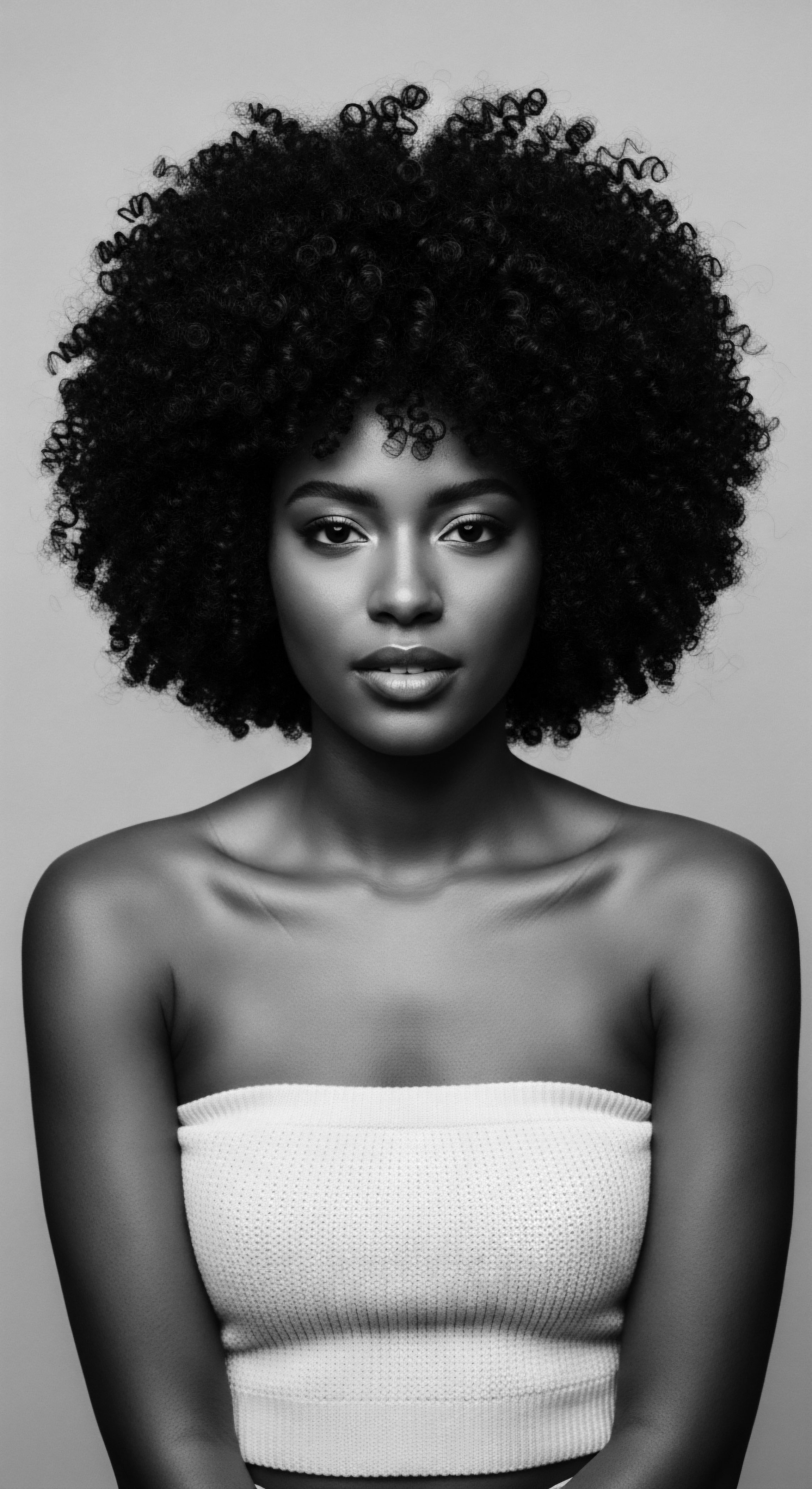
Relay
The current flows from the ancestral springs, carrying forward the essence of ancient practices into the modern landscape of textured hair care. This relay of knowledge bridges millennia, showing how the cultural significance of hair dyeing rituals, rooted in heritage, continues to inform contemporary self-expression and well-being. It is a testament to the enduring power of tradition, often validated and expanded by scientific understanding.
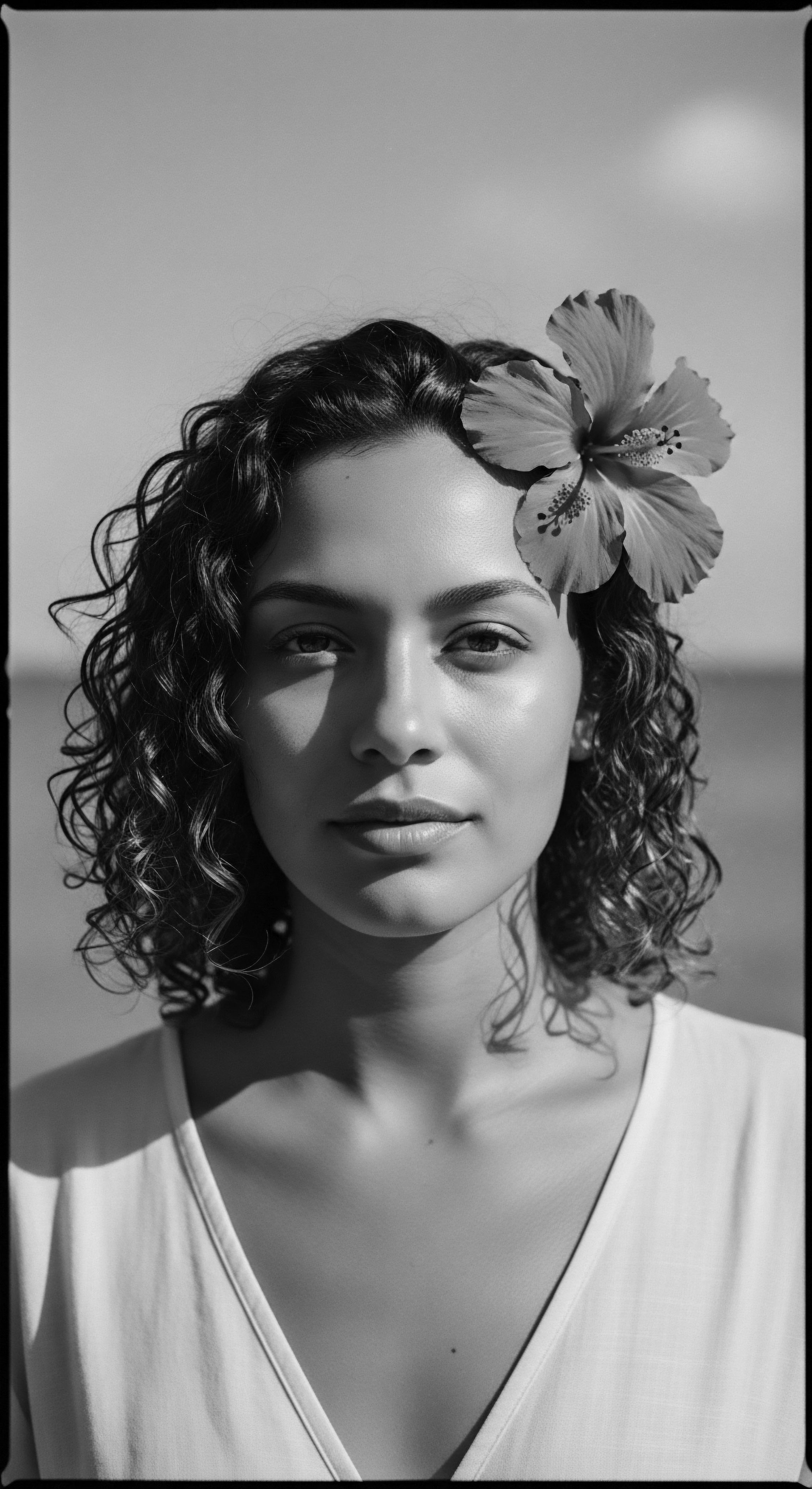
Building Personalized Textured Hair Regimens ❉ Ancestral Echoes
Creating a personalized textured hair regimen today draws heavily from the principles observed in ancestral hair care. These historical practices, often passed down orally, emphasized observation, responsiveness to individual hair needs, and the use of natural, locally sourced ingredients. Hair dyeing, when practiced, was not a one-size-fits-all application. The choice of pigment, its preparation, and the method of application were often tailored to the individual’s specific hair type, desired social communication, or ceremonial requirement.
For instance, the Himba people’s meticulous application of otjize, a red ochre paste, is a highly personalized ritual that begins at puberty, marking a woman’s readiness for marriage and symbolizing her spiritual connection to ancestors and the earth. This deep understanding of tailoring practices to the individual and community resonates with modern emphasis on bespoke hair care.
Modern science, in many ways, offers a deeper lens through which to appreciate this ancestral wisdom. The understanding of the hair shaft’s porosity, its protein structure, or its response to various botanical compounds allows for a more informed approach to hair care. However, the intuition behind traditional formulations, which often combined ingredients like oils, clays, and plant extracts to create synergistic effects, speaks to a sophisticated, albeit empirical, grasp of hair chemistry. These heritage-driven combinations provided not just color, but also moisture, strength, and protection.
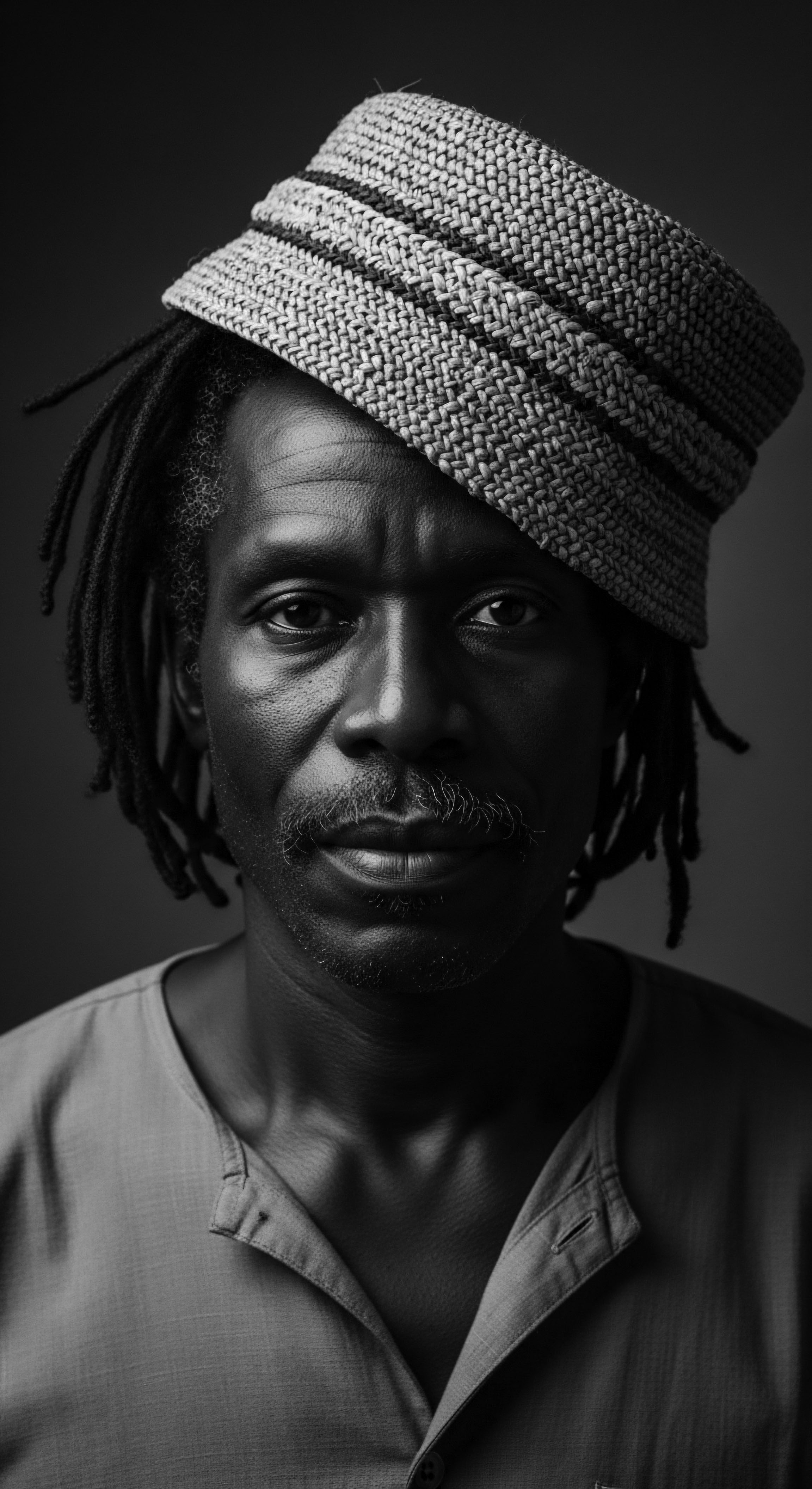
The Nighttime Sanctuary ❉ Bonnet Wisdom and Legacy
The ritual of nighttime hair protection, often through the use of bonnets or head wraps, is a practice deeply ingrained in the heritage of textured hair care. This practice, far from being a simple convenience, speaks to a long history of protecting delicate hair structures and preserving elaborate styles, some of which involved natural dyes. In historical contexts, head coverings could signify modesty, marital status, or social standing, and their protective function for hair was a practical extension of daily care.
The act of wrapping hair at night safeguards it from friction, preserves moisture, and helps maintain styles, including those created with natural colorants, for longer periods. This practice, sustained through generations, serves as a powerful reminder of how daily rituals contribute to the long-term health and preservation of hair, extending the life and vibrancy of any natural coloration.

Ingredient Deep Dives for Textured Hair Needs
The return to natural ingredients in contemporary textured hair care mirrors a timeless ancestral reliance on the bounty of the earth. Many traditional hair dyeing rituals utilized plant-based pigments and minerals, chosen for their efficacy and symbolic value.
The history of hair dyeing and care for textured hair is a testament to generations of ingenuity, communal support, and a profound respect for ancestral knowledge.
Consider Indigofera Tinctoria, the indigo plant. Its leaves, after careful preparation, yield a potent blue dye that has been used for millennia across various cultures, including those in Africa and Asia, to impart deep blue to black hues to hair. When combined with henna, which provides reddish tones, it achieves a richer, more nuanced black.
This combination not only colors the hair but also offers conditioning properties. This tradition is rooted in Ayurvedic practices, where indigo is also valued for its cooling and anti-inflammatory benefits for the scalp.
Another compelling example hails from specific West African communities, where certain women utilized naturally occurring dark clays and plant extracts to darken their hair, often in conjunction with intricate braiding patterns. These substances, derived from the earth, were believed to possess not only cosmetic but also protective and spiritual attributes. A study found that over 80% of rural African women learn their cultural values and heritage through traditional braiding sessions, a practice that frequently incorporated natural hair treatments, including subtle colorations. This illustrates a direct lineage of knowledge transfer, where the application of specific ingredients, often carrying inherent color, became a vehicle for cultural preservation.

Hair Pigments and Cultural Expression
How did specific hair pigments become markers of identity? The choice of hair color often transcended personal preference, becoming a visual signifier within a community. In societies with stratified social structures, particular shades or the very act of dyeing could communicate one’s position, whether a new initiate, a married woman, a leader, or a mourner. The pigments themselves carried inherent symbolism.
Red ochre, for instance, often represented vitality, blood, or connection to the earth, as seen with the Himba. Darker shades, often achieved with indigo or other plant extracts, might signify wisdom, maturity, or spiritual depth. The permanence of these natural dyes meant that the chosen color would serve as a lasting declaration, a public display of one’s belonging and journey.
- Natural Oils ❉ Historically, oils such as shea butter, palm oil, and coconut oil were not only for moisturizing but often acted as carriers for natural pigments, aiding in their adherence to the hair shaft.
- Botanical Dyes ❉ Beyond henna and indigo, plants like black tea and various barks were steeped to create rinses that gradually darkened hair, providing a gentle alternative to chemical treatments.
- Clays and Minerals ❉ Certain mineral-rich clays, like the red ochre of the Himba, were applied not only for their distinctive color but also for their protective qualities against sun and insects.
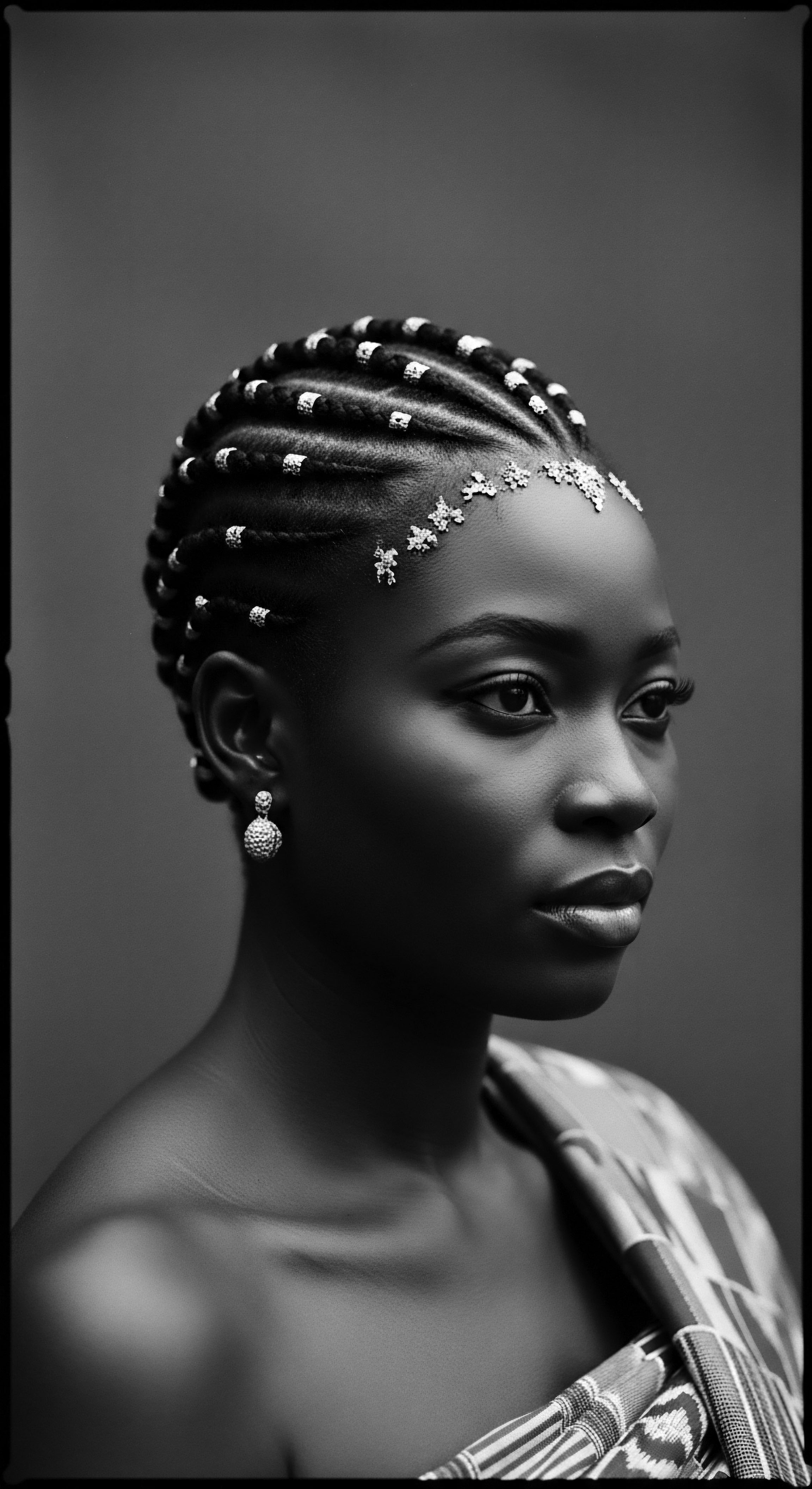
Textured Hair Problem Solving
Addressing textured hair challenges, from dryness to breakage, gains depth when viewed through a heritage lens. Ancestral solutions, often involving a blend of observation, natural remedies, and communal wisdom, frequently incorporated elements that subtly altered hair’s appearance, sometimes lending a desired hue. For instance, remedies for dryness might involve heavier oiling practices that also enhanced the natural darkness or richness of the hair. While modern solutions offer scientifically formulated products, the underlying principles of hydration, protection, and gentle care echo through time.
The understanding that harsh chemicals, common in many commercial dyes, can compromise the hair’s integrity is a contemporary validation of traditional methods that favored gentle, plant-based applications. These traditional practices sought to nourish the hair as they colored it, minimizing damage.

Holistic Influences on Hair Health
The ancestral philosophies that linked hair health to overall well-being provide a powerful framework for a holistic understanding. Hair was never seen in isolation. Its condition was considered a reflection of internal health, spiritual balance, and environmental harmony. Hair dyeing rituals, therefore, were sometimes part of broader wellness practices.
The choice of natural dyes, often derived from plants with known medicinal properties, meant that the act of coloring also contributed to the hair and scalp’s vitality. This interconnectedness—where physical health, spiritual state, and communal identity were all expressed through hair—is a profound legacy. It reminds us that caring for textured hair, and choosing how to adorn it, connects us to a continuous lineage of self-reverence and ancestral wisdom.

Reflection
The story of hair dyeing rituals for textured hair is a testament to the enduring spirit of heritage. It is a narrative woven with strands of ancestral wisdom, communal bonds, and individual expression. Each shade, whether the deep earth tones of ochre or the rich blues of indigo, carries echoes of practices passed down through generations, speaking to identity, status, protection, and spiritual connection. The very act of altering hair color, for those with textured hair, has historically been a deliberate declaration, a visual language that articulated one’s place within the collective and one’s journey through life.
This living archive, the ‘Soul of a Strand’, continues to inspire. It teaches us that beauty rituals are seldom superficial; they are profound acts of cultural preservation, acts that keep the vibrant legacy of textured hair alive and thriving across time.
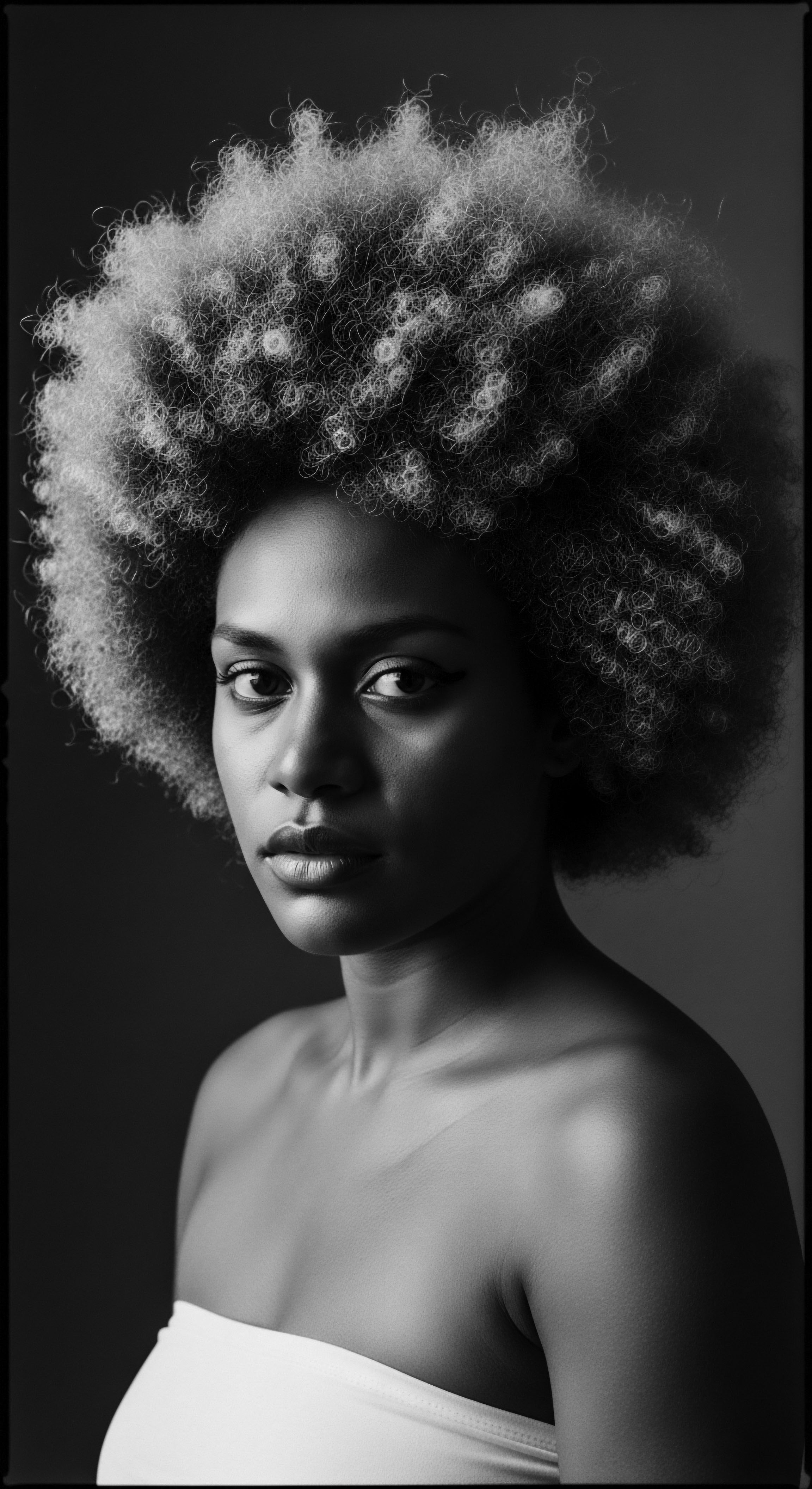
References
- Byrd, Ayana, and Lori L. Tharps. Hair Story ❉ Untangling the Roots of Black Hair in America. St. Martin’s Press, 2001.
- Mbilishaka, Afiya. PsychoHairapy ❉ Brushing Up on the History and Psychology of Black Hair. Psi Chi, 2018.
- Sherrow, Victoria. Encyclopedia of Hair ❉ A Cultural History. Greenwood Press, 2006.
- Beckwith, Carol, and Angela Fisher. African Ceremonies. Harry N. Abrams, 1999.
- Mangum, Mary, and Denise Woods. Hair Care Chemistry for the Professional. Cengage Learning, 2011.
- Yildirim, Arzu, et al. “The Chemistry Mechanism of Hair Dyes.” Middle East Journal of Science, vol. 8, no. 2, 2022, pp. 173-193.
- Wong, Nikita, et al. “Historical Perspectives on Hair Care and Common Styling Practices in Black Women.” Clinics in Dermatology, vol. 43, no. 2, 2025, pp. 100-108.
- Caffrey, Cait. “Afro-textured hair.” EBSCO Research Starters, 2023.
